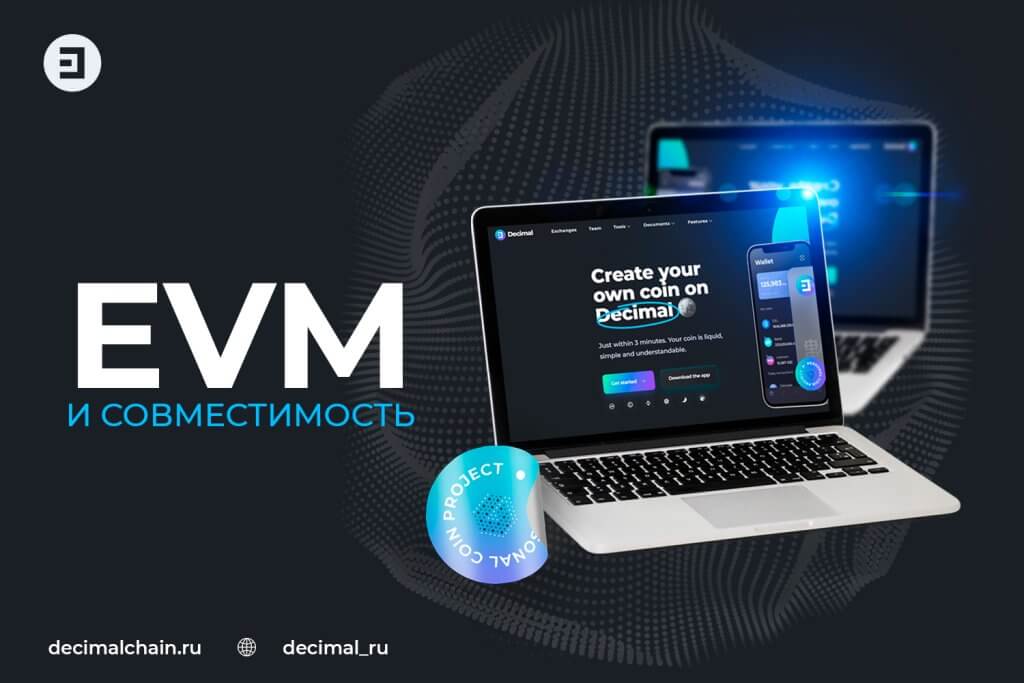EVM & Compatibility
Ethereum is not a new name for all crypto-enthusiasts, but the term “Ethereum Virtual Machine” until now was known only to a narrow circle of DeFi and WEB 3.0 developers. Today, my dear reader, we will lift the veil of mystery of this term and tell you how Decimal managed to scale the project by implementing the EVM.
So, first of all, to dive into the details of the interconnection of all crypto tools, features and capabilities, it is worth understanding what each of them is. EVM is an abbreviation for Ethereum Virtual Machine. The term virtual machine comes from software and was commonly associated with an operating system that runs inside of another operating system. As an example, a computer running Linux would run virtual machines with a Windows system installed inside, thereby extending the capabilities of the device and leveraging the strengths of each operating system.
With its integrated EVM module, blockchain Decimal expands the possibilities for ordinary users and developers at any level. The EVM module opens up completely new perspectives for developing and applying the Decimal blockchain. The virtual machine provides the opportunity to leverage the years of experience of Ethereum developers and Decimal’s unique functionality that has emerged over the years.
Once upon a time, it would have sounded like magic, but here and now, this is the reality we live in. To understand how it is possible and to comprehend the details of what is happening it is worth turning to superficial theory. In the future, we will take a closer look at these topics. When the Decimal blockchain was launched, the entire technical framework was described in the Yellow Paper. It was a more mathematical, economic and technical analysis of Decimal’s structure. This information is already presented in the new White Paper in section “5. Overview of the technical framework”. A large part of the chapter focuses specifically on blockchain generations. We have highlighted three blockchains as examples: Bitcoin, Ethereum, and Avalanche. Each of these blockchains is from a different generation, and each has brought something different to what we have today. Bitcoin showed the world digital money, Ethereum made it possible to make smart contracts and not just use “digital money”, and Avalanche marked the creation of an entire blockchain system (blockchain ecosystem) that is connected to each other. Decimal Smart Chain brings together several generations of blockchain, thereby aiming to be at the forefront of WEB 3.0 and Multichain technologies, integrating advanced blockchains into the Internet blockchain, and complementing and extending the functionality of each link in this environment.
Decimal, as one of the atoms we talked about in one of the articles, is part of an environment that is not yet obvious to many. Still, soon this environment will become as commonplace as the current version of the Internet in which you are reading this text.
